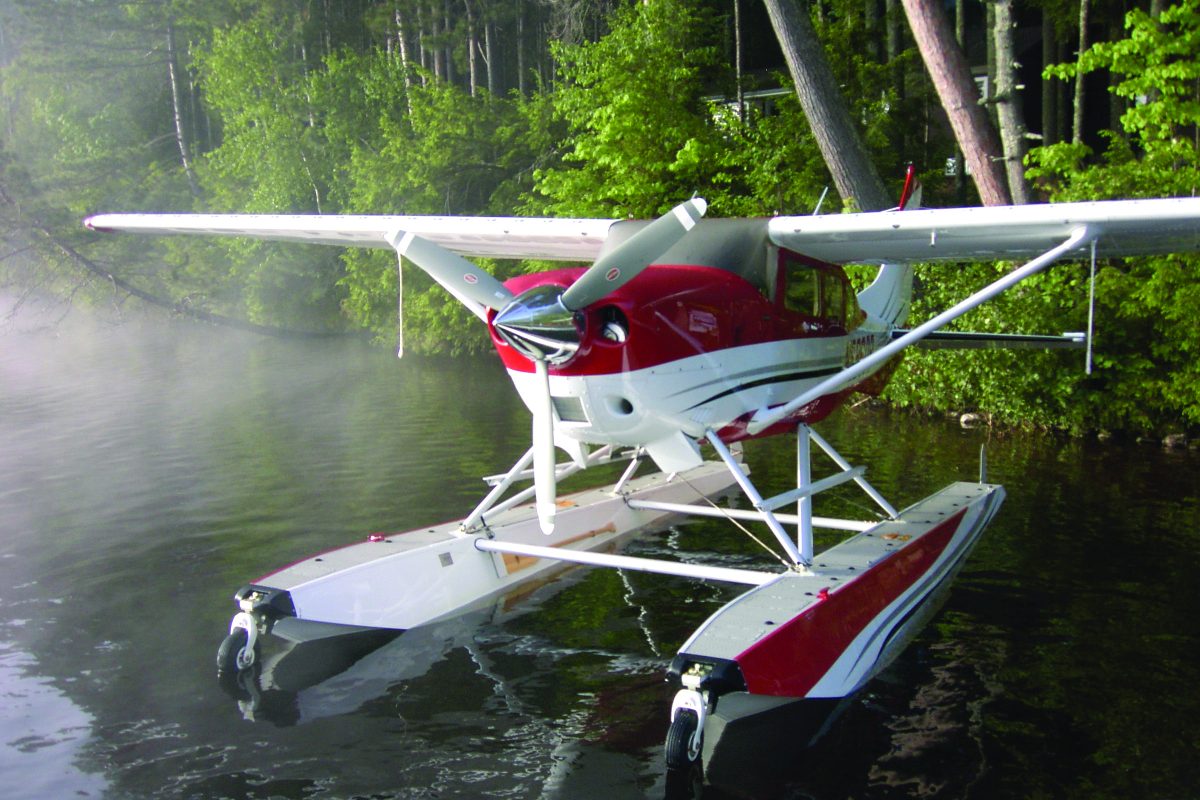
If you’re like many pilots, learning to fly a seaplane is at or near the top of your aviation bucket list. The seaplane rating is considered one of the most fun ratings to earn because it opens the door to rewarding opportunities to explore areas of the world that are otherwise inaccessible by land-based aircraft. In fact, runways are no longer required in a seaplane; adventure awaits at any body of water including lakes, rivers, and even oceans. You may already have an interest in earning your seaplane rating. But have you ever wondered how exactly a seaplane stays above water? Here’s a closer look at how seaplane floats work:
There are two different types of floats for aircraft: amphibious and straight floats. Amphibious floats have retractable landing gear, which permits the aircraft to operate on both hard-surface runways and on the water. Straight floats, on the other hand, restrict the airplane to the water. Floats must be able to displace enough water to support the weight of the aircraft on the water and create buoyancy.
Seaplane floats come in all shapes and sizes, and many general aviation aircraft can be converted to floatplanes. Floats are popular additions on airplanes like the Cessna 185, Aviat Husky, American Champion Scout, and de Havilland Beaver and Twin Otter. Most floats are constructed from either aluminum or composite materials, which make them lightweight and easy to repair.
Contrary to popular belief, the interior of a seaplane float is not completely hollow. The float is engineered with separate watertight compartments that prevent the float from filling up with water if it gets punctured. Pumps at the top of each compartment make it easy for water to be drained out. It’s very important for pilots to pump out water from the floats during preflight, as water can add weight and impact the aircraft’s center of gravity.
Pilots maneuver a seaplane on the water by taxiing or sailing. The floats have a water rudder which is attached to the rudder pedals inside the plane and allows the pilot to steer the airplane in the water. Floats also feature a keel, a support structure which runs down the centerline on the bottom of the float. The keel keeps the aircraft going straight in the water and prevents it from tipping sideways. Located aft of the keel is a structure called the skeg, which prevents the aircraft from tipping backward on the rear portion of the float. Between the keel and the skeg is the step. When the pilot accelerates and puts the seaplane “on the step,” the rear portion of the float is lifted out of the water to reduce drag. Flying Magazine provides a great diagram of all the components found on a standard float.
Many land-based aircraft that are converted to floats often require a propeller performance conversion to help overcome drag and produce more thrust at takeoff. Designed for optimal takeoff and climb performance, Hartzell’s lightweight, all carbon fiber Trailblazer propeller is an ideal choice for pilots looking to modify an aircraft for bush flying and floatplane adventures.
Are you interested in earning your seaplane rating? The Seaplane Pilot Association has plenty of information on water flying opportunities and activities. Our friends at Wipaire, the manufacturer of Wipline floats, also provide a great list of flight schools that provide seaplane instruction on their website.